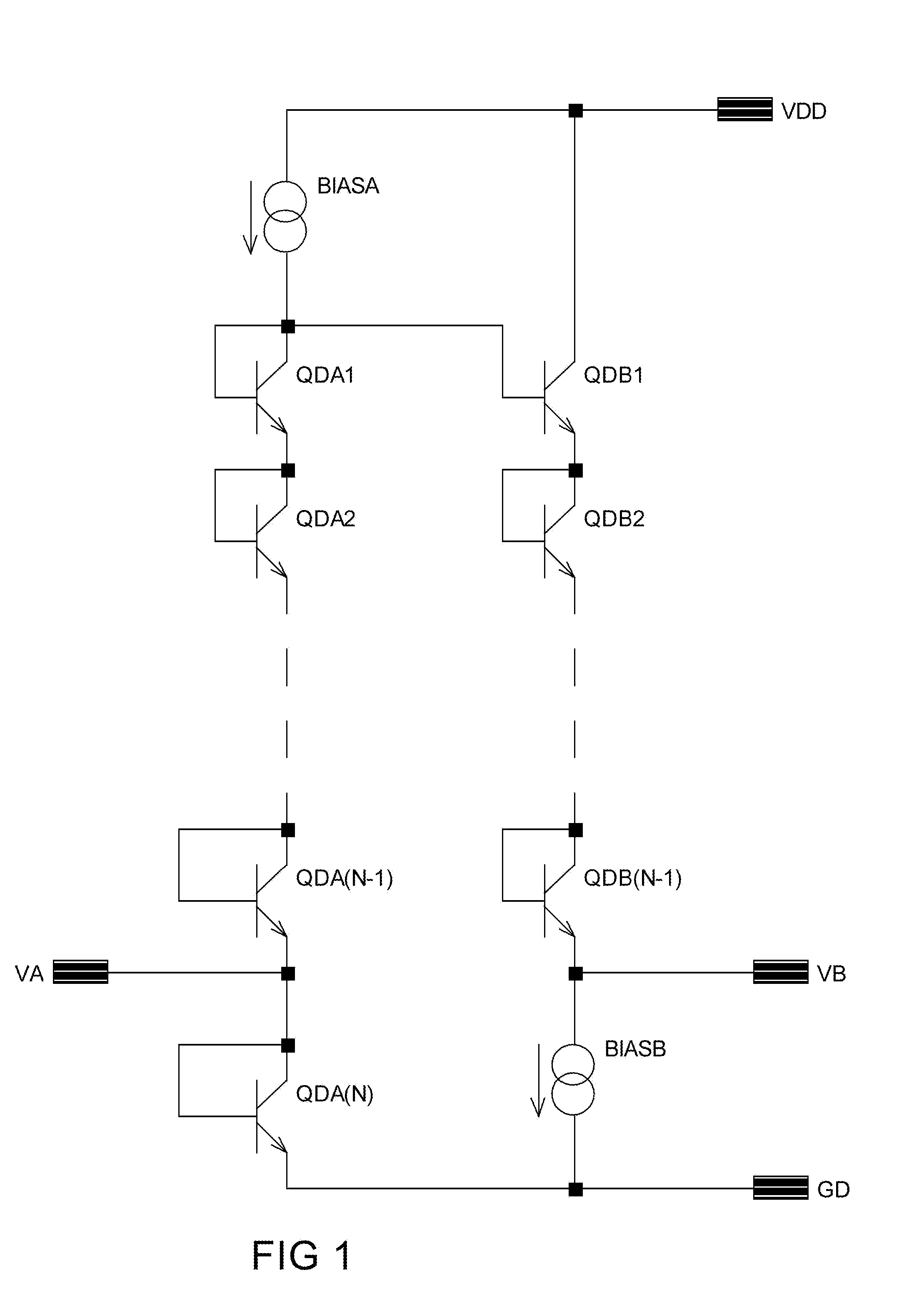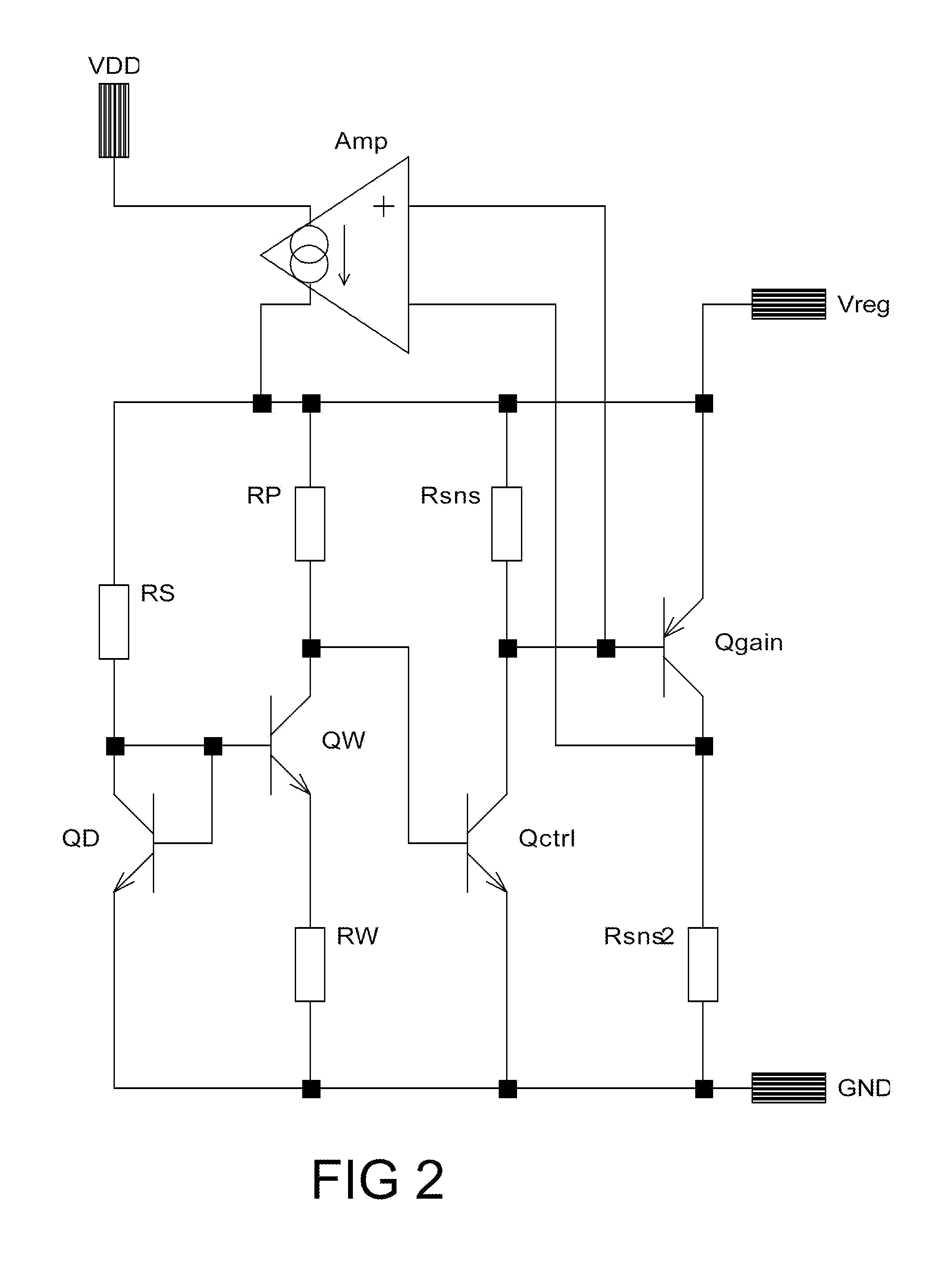Temperature sensitive circuit
a technology of temperature sensitive circuits and sensors, applied in the field of temperature sensors, to achieve the effect of reducing the total current, increasing the ptat voltage, and little practical application
- Summary
- Abstract
- Description
- Claims
- Application Information
AI Technical Summary
Benefits of technology
Problems solved by technology
Method used
Image
Examples
Embodiment Construction
[0025]All the circuit diagrams in the drawings use conventional notation for components such as transistors, resistors and current supplies and the manner in which the various individual components are interconnected will be assumed to be the same as shown in the drawings. In the interest of clarity and conciseness, no verbal description of the interconnections will be repeated in the text below.
[0026]FIG. 1 shows the earliest bandgap arrangement due to Hilbiber. Using compact modern IC Transistors would allow an Area Ratio of at least 1:100 for the QDA Transistors relative to the QDB transistors, and this would require N=5, i.e. a total of 9 Transistors in order for the output to be at the bandgap potential. The minimum supply would therefore be about 4.5 Volts—considerably lower than would have been practical when Hilbiber designed the original reference. The noise levels may be reduced by using fewer stages. It may even be practical to increase the Area Ratio to 1:220, which woul...
PUM
 Login to View More
Login to View More Abstract
Description
Claims
Application Information
 Login to View More
Login to View More - R&D
- Intellectual Property
- Life Sciences
- Materials
- Tech Scout
- Unparalleled Data Quality
- Higher Quality Content
- 60% Fewer Hallucinations
Browse by: Latest US Patents, China's latest patents, Technical Efficacy Thesaurus, Application Domain, Technology Topic, Popular Technical Reports.
© 2025 PatSnap. All rights reserved.Legal|Privacy policy|Modern Slavery Act Transparency Statement|Sitemap|About US| Contact US: help@patsnap.com



